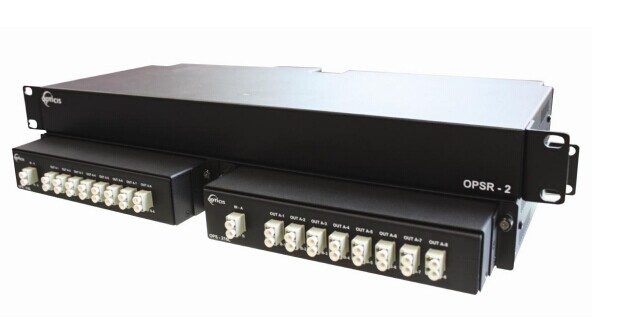Function of a fiber optic splitter, as far as I know, it is used to distribute a signal to more than one fiber optical receiver, such as in DVB-T services, because of that can reduce the RF performance of the analogue fiber optic connection, there is a point i have to explain, RF, just Radio Frequency, it is usually in telecommunication industry. In fact, we are bound to say that that it does offer the advantage of a reduction in the number and therefore cost of optical transmitters. And relative, multimode fiber splitter distributing a signal from a single source to multiple destinations offers a significant performance advantage over the use of optical splitters. The exponential increase in demand for bandwidth is forcing access networks to extend the amount of bandwidth they can support. Traditionally based on “static” allocation of time slots per user (or TDM) and passive optical splitters, these systems are struggling to keep pace with the rise in line-rate as it cuts away link budget and therefore splitting ratio and network reach. One attractive alternative for passive splitting is the point of wavelength division.
We know that fiber optical splitter are available in a number of split rations, they are characterised by the inherent loss associated with the split ratio, added to a excess loss that depends on the design and construction of the splitter and the optical splitters themselves are very compact typically 65 x 15 x 15 mm, and split rations of 1×2,1×4, 1×8, 1×16 optical splitters are examined and compared with a straight through 1×1 system. Optical losses quoted are typical of readily available optical splitters. There are two techniques for manufacturing Splitters: Fused Biconical Taper (FBT splitter) and Planar Lightwave Circuit (PLC splitter). A 1×2 FBT splitter is made in precisely fusing two fibers together. Higher split ratios are obtained by cascading multiple 1×2 splitters. A PLC splitter consists of a microscopic optical circuit that is typically etched in silicon.
We fiberstore have some branches in Europe and US, of course some of the Asian regions, probably only suitable solution for high bandwidth demand with a long reach is using optical cable to customers (FTTx). One of the ways is using some type of Passive Optical Network (PON), such as ftth splitter. Gigabit PON (GPON) is the most often type used by European and US providers (in addition to APON and BPON) while providers in Asia predominantly use EPON/GePON. Probably only suitable solution for high bandwidth demand with a long reach is using optical cable to consumers (FTTx). One of the approaches is using some type of Passive Optical Network (PON). Gigabit PON (GPON) is the most often type used by European and US providers (in addition to APON and BPON) while providers in Asia predominantly use EPON/GePON. At this point, the splitting device simply divides the optical power into N separate paths to the subscribers. The number of splitting paths can vary from 2 to 64. From the optical splitter, individual single-mode fiber strand run to each user (home, businesses, etc.). Branches components of a fiber optic communications network, experimental fiber optic devices and any other application requiring highly reliable splitting combining of optical lines. The optical fiber transmission span from the central office to the each user can be up to 20km. Fiberstore provides devices to solve this problem. If you have the needs. Fiberstore will be your choice.


